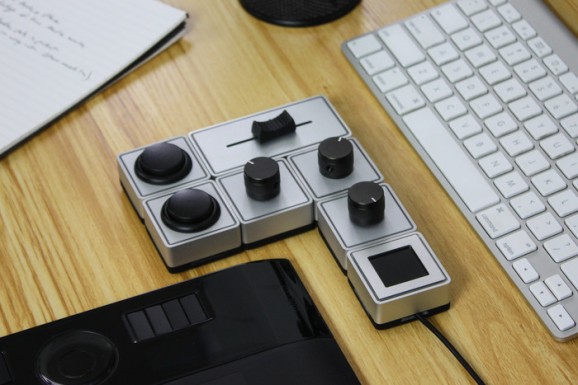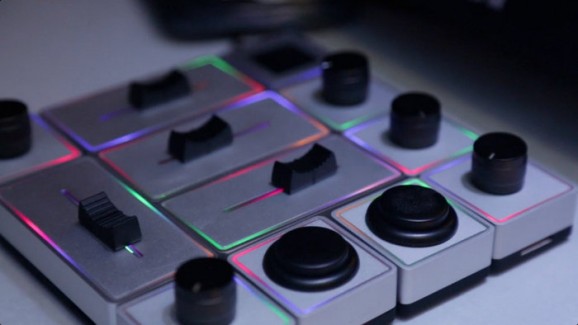Customizable Modular Interface Provides Hands-On Control For Any Software
This article is more than 2 years old
 I’m a sucker for cool-looking technology, but I’ll be the first to admit that some of these awesome gizmos are easy on the eyes, but not so easy to use. That doesn’t seem to be the case with Palette, a modular, modifiable hardware interface that can control any software.
I’m a sucker for cool-looking technology, but I’ll be the first to admit that some of these awesome gizmos are easy on the eyes, but not so easy to use. That doesn’t seem to be the case with Palette, a modular, modifiable hardware interface that can control any software.
The idea behind Palette is so simple and utilitarian that it took me a few minutes to understand what it’s actually for, which is pretty much anything you want. The actual hardware is an arrangement of customizable physical inputs—dials, buttons, and sliders. They’re all modular and either square or rectangle-shaped, so they fit together much like Legos.
You start with the basic kit, choosing from either wood or aluminum, which includes the “power module” that plugs into your computer’s USB port. From there, users can add inputs if and when they want, or you know that you require something more complex than the basic starter kit (DJs, for example), you can order the Pro Kit, which comes with 6 sliders, 5 dials, and 5 buttons. The modules can be assembled in any configuration, depending on what works best for you.
 Plug the hardware into your USB ports and Palette’s desktop app immediately recognizes the configuration. In fact, you can swap modules in and out on the fly and the desktop app will keep up. Using the app, users then assign the modular inputs to software functions—for example, if you were a DJ, you’d probably assign a master volume function to one of the dials or sliders, as well as filters, playback cues, and other tools.
Plug the hardware into your USB ports and Palette’s desktop app immediately recognizes the configuration. In fact, you can swap modules in and out on the fly and the desktop app will keep up. Using the app, users then assign the modular inputs to software functions—for example, if you were a DJ, you’d probably assign a master volume function to one of the dials or sliders, as well as filters, playback cues, and other tools.
Calvin Chu, inventor of the Palette, even made a configuration for his grandmother so she could more easily use Skype—he turned the hardware into a number pad. Palette transfers controls that are usually seen on the screen to hardware, making them easier to access and freeing up the screen for other work.
The Palette could replace some conventional DJ hardware. Instead of buying new gear, DJs could add more modules. It even has a MIDI mode to facilitate mixing and a light halo so DJs can see the controls in the dark. Chu envisions Palette as being useful for photographers editing and touching up their work, and even thinks the Palette could replace many mouse functions. Designers and artists could use it too, as it complements tablets and styluses, and could surpase on-screen menus or keyboard shortcuts. You may be able to use modules to control games or simply surf the web.

Palette’s desktop software, which is compatible with Windows, Mac, and Linux operating systems, is really what runs the show. Chu believes it can detect and sync with any software, including Skype, Spotify, Traktor, Ableton, and all the Adobe suites.
As with so many of these cool devices, Palette has a Kickstarter. With 33 days to go, Palette is already 75% of the way to its goal. If you’re interested in backing Palette, or getting more information, you’ve got plenty of time. Donations of $99 CAD or more get a four-module starter kit, which should be available in June 2014.
I’m trying to come up with reasons to justify owning a Palette. I don’t really need it, but I want it. This is one of those devices I could see being so integrated into my life and computer routines that I refuse to give it up. There’s only one way to find out.












